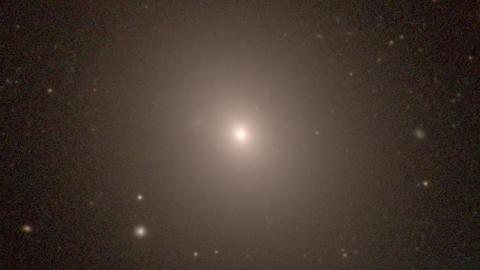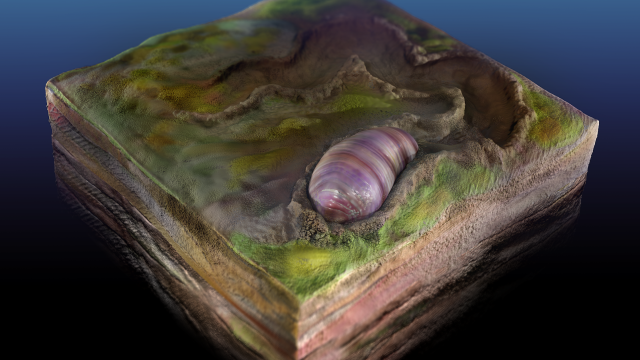The universe is expanding faster than estimated, finds new study

Credit: Carnegie-Irvine Galaxy Survey
- A new estimate of the expansion rate of the universe puts it at 73.3 km/sec/Mpc.
- This is faster than the previous estimate of expansion in the early universe.
- The discrepancy may mean fundamental theories need rethinking.
How fast is our universe is expanding? Scientists zeroed in on a new estimate of the local expansion rate and found that it doesn’t square up with previously-predicted rates of expansion in the early universe, right after the Big Bang 13.8 billion years ago.
This is significant because the expansion rate is fundamental to figuring out the universe’s evolution as well as the mysterious dark energy, which is believed to make up about 68 percent of the universe and impacts how fast it’s growing.
Scientists made a new estimate using the surface brightness fluctuation (SBF) technique for measuring cosmic distances. They hoped this approach could achieve more precision. The method used average stellar brightness of 63 giant elliptical galaxies to come up with the calculated rate of 73.3 kilometers per second per megaparsec (km/sec/Mpc) for the universe’s expansion. That implies that every megaparsec (or 3.3 million light years from Earth), the universe expands an additional 73.3 kilometers per second.
The paper’s co-author, cosmologist and University of California, Berkeley professor Chung-Pei Ma, stated that this method holds much promise.
“For measuring distances to galaxies out to 100 megaparsecs, this is a fantastic method,” said Ma, “This is the first paper that assembles a large, homogeneous set of data, on 63 galaxies, for the goal of studying H-naught [Hubble constant] using the SBF method.”
Ma also leads the MASSIVE survey of local galaxies, which provided data for 43 of the galaxies in this analysis.
What’s controversial is that if you calculate this rate using measurements of fluctuations in the cosmic microwave background or density variation data for normal matter in the early universe, you’d get a different result of 67.4 km/sec/Mpc.
The science of expansion: Andromeda, gravity, and the ‘Big Rip’ | Michelle Thaller | Big Thinkwww.youtube.com
How is the difference in estimates possible, and what do the nonmatching answers suggest? The central difficulty lies in establishing certainty for the locations and relative distances of objects in space. Astronomers believe the discrepancies in calculations may point to the fact that current cosmological theories are either not fully realized or even dead wrong.
The paper’s first author, John Blakeslee, an astronomer with the National Science Foundation’s NOIRLab, thinks the implications of this type of research are enormous.
“The whole story of astronomy is, in a sense, the effort to understand the absolute scale of the universe, which then tells us about the physics,” Blakeslee stated in a press release, “The SBF method is more broadly applicable to the general population of evolved galaxies in the local universe, and certainly if we get enough galaxies with the James Webb Space Telescope, this method has the potential to give the best local measurement of the Hubble constant.”
The ultra-powerful James Webb Telescope is on track to be launched in October 2021.
“The James Webb telescope has the potential to really decrease the error bars for SBF,” Ma agreed.
Other authors of the study included Jenny Greene of Princeton University, leader of the MASSIVE team, Peter Milne of the University of Arizona in Tucson, and Joseph Jensen of Utah Valley University.
Check out their new paper published in The Astrophysical Journal.





